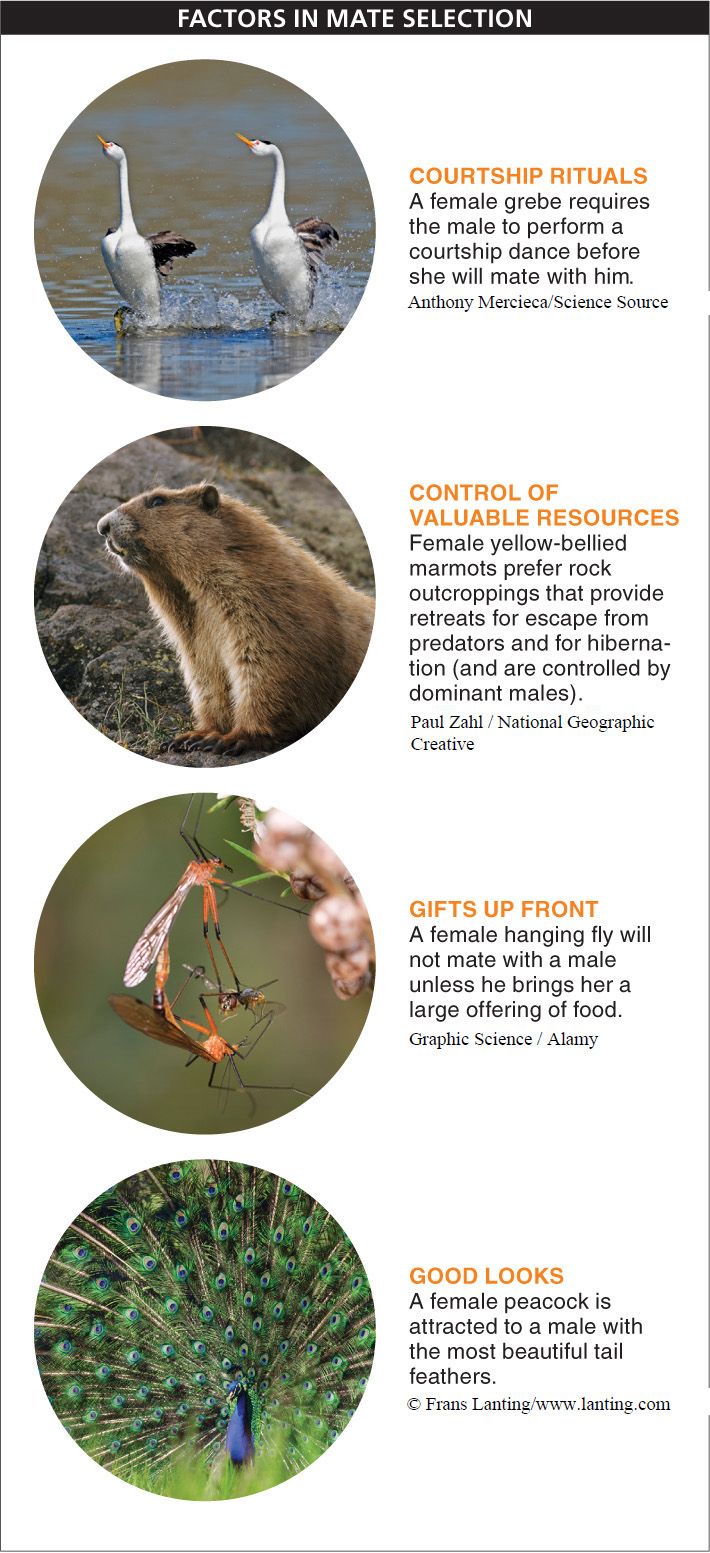Female choosiness (and the male-
1. Mate only after subjecting a male to courtship rituals. In many bird species, the female requires the male to perform an elaborate and time-

2. Mate only with a male who controls valuable resources. Territorial defense is a common means by which males compete for access to females. Among arctic ground squirrels, for example, a female chooses a mate based, in part, on the territory he defends, which is where she will reside after mating. With greater quality and quantity of resources in his territory, a male is better able to attract females, whose reproductive success can be increased if the territory is rich in resources.
387
“It is a truth universally acknowledged, that a single man in possession of a good fortune must be in want of a wife.”
—JANE AUSTEN, Pride and Prejudice, 1813
3. Mate only with a male who contributes a large parental investment up front. Better than a believable pledge to commit resources to future offspring is an actual exchange in which a female requires a male to give her his parental investment up front, in the form of resources that will help her maximize her reproductive success. In the hanging fly, for example, a female will not mate with a male unless he brings her a big piece of food, called a nuptial gift—usually a dead insect. The larger the food item, the longer she will mate; and the more she eats, the larger the number of eggs she will lay. After about 20 minutes of mating, though, when a male has transferred all of the sperm that he can, he is likely to break off the mating and take back whatever remains of the “gift,” which he may use to try to attract another mate. Nuptial feeding is common among birds and insects.
4. Mate only with a male that has a valuable physical attribute. Male-
In a similar process, rather than choosing the best-
Why do so few women get into barroom brawls?
With so many examples of male-
388
Moreover, among humans, social and cultural values have powerful influences over mating behavior, complicating interpretation. We are not lumbering robots, destined to follow some genetic program. Researchers have noted some subtle manifestations of female health and fertility, including waist-
TAKE-HOME MESSAGE 9.12
As a consequence of male-
What are the four factors that influence female choosiness when selecting a mate?
The four factors are: (1) mate only after subjecting a male to courtship rituals; (2) mate only with a male who controls valuable resources; (3) mate only with a male who contributes a large parental investment up front; and (4) mate only with a male that has a valuable physical attribute.